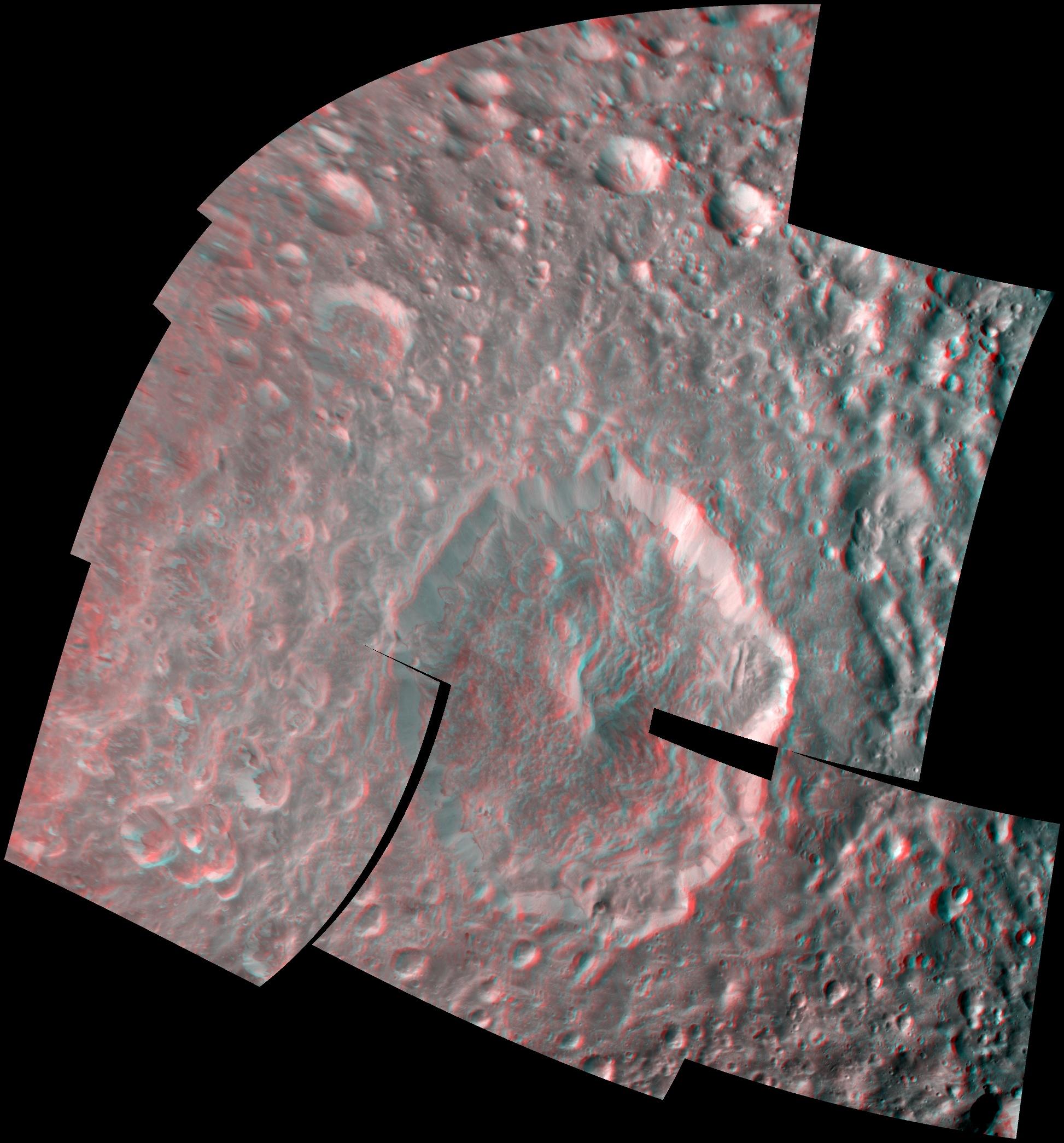Herschel Crater in 3-D

| PIA Number | PIA12573 |
|---|---|
| Language |
|
NASA's Cassini spacecraft captured a three-dimensional view of the large Herschel Crater on Saturn's moon Mimas during its closest-ever flyby of the moon.
Herschel Crater is 130 kilometers (80 miles) wide and covers most of the bottom center of this image. Scientists continue to study this impact basin and its surrounding terrain (see Streaks and Markings on Mimas and Streaked Craters in False-Color).
This 3-D view is a color composite mosaic made from 14 different black and white images that were taken from slightly different viewing angles. The images were re-projected to a simple cylindrical projection. The images were combined so that the viewer's left and right eye, respectively and separately, see a left and right image of the black and white stereo pair when viewed through red-blue glasses.
This view is centered on terrain at 11 degrees north latitude, 122 degrees west longitude. This view looks toward the hemisphere of Mimas that leads in its orbit around Saturn. Mimas is 396 kilometers (246 miles) across. North on Mimas is up. The images were taken in visible light with Cassini's spacecraft narrow-angle camera on Feb. 13, 2010. The view was acquired at a distance of approximately 21,000 kilometers (13,000 miles) from Mimas. Image scale is 92 meters (302 feet) per pixel.
The Cassini-Huygens mission is a cooperative project of NASA, the European Space Agency and the Italian Space Agency. The Jet Propulsion Laboratory, a division of the California Institute of Technology in Pasadena, manages the mission for NASA's Science Mission Directorate in Washington. The Cassini orbiter and its two onboard cameras were designed, developed and assembled at JPL. The imaging team is based at the Space Science Institute, Boulder, Colo.
For more information about the Cassini-Huygens mission visit http://www.nasa.gov/cassini and http://saturn.jpl.nasa.gov. The Cassini imaging team homepage is at http://ciclops.org.
Credit: NASA/JPL/SSI
